Letters from Lodi
An insightful and objective look at viticulture and winemaking from the Lodi
Appellation and the growers and vintners behind these crafts. Told from the
perspective of multi-award winning wine journalist, Randy Caparoso.
Reports of the imminent demise of the American wine industry are greatly exaggerated

Wine lovers of the boomer generation—still the wine industry's bread-and-butter demographic—taking their leisure at a past Lodi ZinFest (slated to return in May 2023 as Lodi Wine Experience).
The American Wine Industry Has an Old People Problem. That was the title of an article published by The New York Times this past January 31, 2023, authored by the newspaper's widely followed wine correspondent Eric Asimov.
By "old people," the Times was wryly referring to Americans over 60 years old, a demographic that recent statistics show is the only segment of the wine market that is currently purchasing and consuming more wine—especially premium quality/priced wine—with any degree of significance.
Americans under 60 years old, or so it seems, don't have nearly as much appreciation of fine wine as their elders. Furthermore, studies show that an alarming (at least for the wine industry) number of Americans under 30 are, gasp, "abstainers." They aren't drinking wine at all!
![]()
The core subject of Asimov's story was the most recently released 2023 edition of the "State of the U.S. Wine Industry" put out by Silicon Valley Bank, which has been furnishing a formerly documented wine market analysis and advisory to the American wine industry for the past 22 years. As Asimov interprets the most recent findings:
The state of the American wine industry is grim, according to a closely watched report that annually analyzes its trajectory. Winemakers and advertisers are missing out on younger consumers, the report says, by failing to produce wines that fit their budgets and neglecting to reach out to them with targeted marketing campaigns.
This past week, I got a phone call from a reporter from Los Angeles Times who is working on his own article covering Silicon Valley Bank's 2023 industry report. "Did you read it?" the reporter asked. "In 10 years wine industry production will drop by 20%, and vineyards everywhere are already being removed!" Evidently, according to outside-the-industry eyes, this news is reason enough to batten down the hatches or beat down a path to the lifeboats.
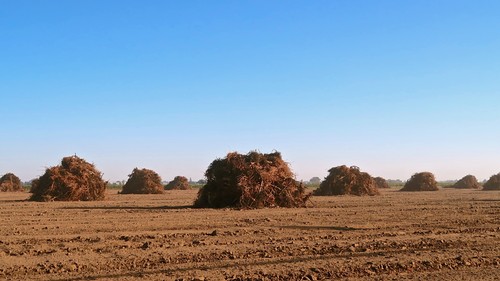
A common winter sight in Lodi and everywhere wine grapes are grown: uprooted vineyard, typically replaced by either a new vineyard—in these days, often a higher demand/profit grape such as Cabernet Sauvignon—or a different agricultural product.
It is easy to go into a panic or overreact to reports citing fought phrases such as "vineyard removal." How can I put this? If, for instance, you have a redwood in your backyard that is overgrown, you remove it. That doesn't mean you hate redwoods, or that your next step is to remove all the trees on your property. It just means that one tree has to go.
Removal of vineyards goes on in every major wine-producing country at one time or another. While grape and wine gluts come and go in cycles, the fact remains, the global wine industry has been in extremely good shape over the past five, or ten years (for actual numbers, see The World's vineyard surface in 2020 and the split by country, BKWineMagazine).
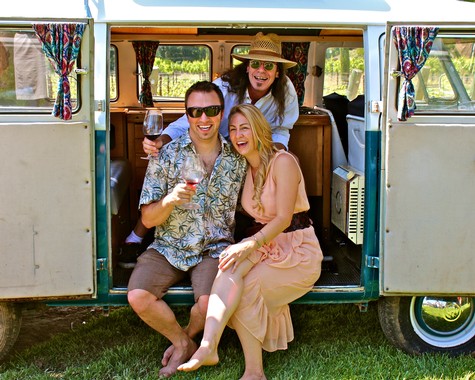
A relic from "good ol' days": 1967 VW bus parked in the Bokisch family's Las Cerezas Vineyard on the east side of Lodi.
With respect to California: In response to the enormous boom in wine appreciation over a significant length of time—since, say, 1972 when TIME Magazine put a jug of Gallo Hearty Burgundy on its cover—the American wine industry has been growing to the point where, yes, it recently reached a saturation relative to actual consumer consumption.
Whenever there is money to be made, anywhere in the world, there is always speculation, some of it ill-advised. Businessmen they drink my wine, Bob Dylan sang long ago, plowmen dig my earth. Vineyard removals are almost always reflections of a market correction. In California, for instance, varietal wines made from grapes such as Cabernet Sauvignon, Pinot Noir, and Sauvignon Blanc have steadily increased in popularity, having a direct effect on the wine grape industry in Lodi as well as the rest of the state. When demand goes up, so do grape prices and profit. Therefore, the new acreage of these varieties has steadily increased over the past ten years. Zinfandel, on the other hand, has been going in the opposite direction primarily because of the drop in consumer interest in White Zinfandel, and despite the steady increase in sales of red wines made from old vine Zinfandel.
When vineyards are removed, what this usually is not a sign of is that the wine industry is in danger of collapsing, or that consumers will stop drinking wine. It is 100% guaranteed that they never will.
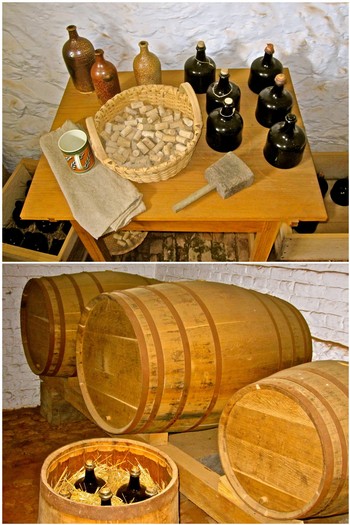
Recent photos were taken by the author of the wine cellar in Monticello, the historic estate of Thomas Jefferson—one of history's most famous wine connoisseurs.
For many Americans, wine as a beverage has not only fulfilled Thomas Jefferson's dictum from long ago—that "good wine is a necessity of life"—it has also become just too good and interesting a product. There may be a global wine glut, but it's a glut of fantastic-tasting wines, at every price range!
If anything, the consumption of wines in general in the U.S. has grown at a relentless pace. While the average American does not consume as much wine as, say, the average French or Italian, the U.S. now easily consumes the largest volume of wine in the world (see Statista, Wine consumption world worldwide in 2021, by country).
And every year, Americans drink more wine. Re Wine Institute's latest graph showing the steady increase of wine consumption in total and by capita in the U.S. since 1972:
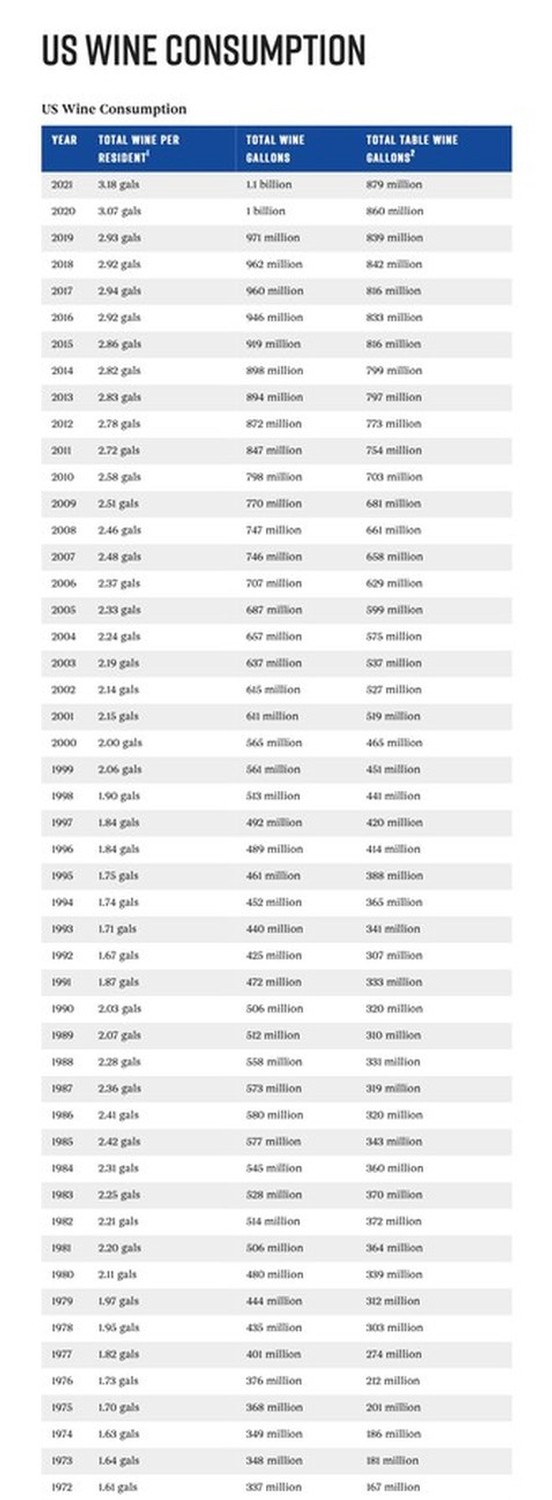
Betting against the California wine industry, which produces 85% of the domestic product consumed in the country, is probably like betting against Patrick Mahomes or Tom Brady in a Super Bowl. In the bigger scheme of things, it's not wise. The industry may be currently challenged by gradually shifting demographics, but believe me when I say that all the growers, vintners, and winery or brand owners that I know are as obsessed as they ever were with making their adjustments and continuing to evolve. Primarily by growing better grapes in better and better places, leading to better and better wines. Why? Because this is exactly what pickier and pickier consumers continue to demand—better and more interesting wines.
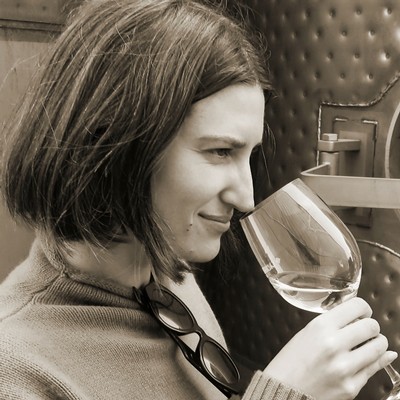
Millennial vintner Michele Ouellet Benson tasting Lodi-grown Picpoul Blanc from the tank recently bottled under her Lorenza Wine label (co-owned with a late boomer named Melinda Kearney).
The 2023 Silicon Valley Report, in fact, finishes with these conclusions, ruminating on the recent and current history of the American wine market, without mincing any words:
Starting in 1994 the growth in the US wine business took off for 25 years. It's been a great time to be in this business.
[Today's]... consumer is focused on a new version of health-consciousness, the young consumer we hope to attract is using wine for special occasions, we are likely entering difficult national and world economic times, while at the same time, we are clearly entering an era where the volume of total wine sales is in decline... How long will this next downcycle last?
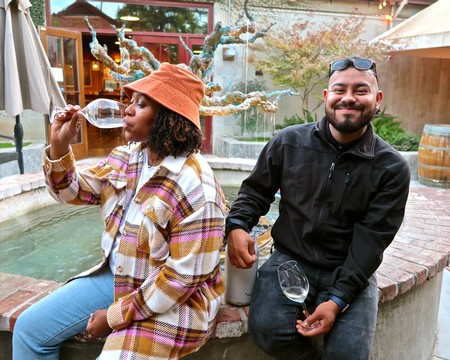
Despite the knock that their generation doesn't appreciate wine enough, many younger wine lovers (such as these two at Lodi's Klinker Brick Winery) are just as thrilled by the taste of a good, pure, fresh wine as anyone.
Is that doom and gloom? I'm sure some will say it is, particularly if you work in the premium wine industry, which is showing good growth right now. But this is something we need to talk about and solve... It should matter to every person with a stake in the US wine business.
The question, of course, is the American wine industry up to it? How can we get the younger Millennials and Gen-Z (i.e., adults born after the mid-1990s) consumers—even the abstainers—interested in high-quality wine?
On one hand, there is a lot to be said for simply waiting for the newest generations to... grow up. When Baby Boomers were in their 20s and early 30s, after all, the wines that enchanted them were products such as Boone's Farm Strawberry Hill, Blue Nun, Lancers and Mateus, Gallo Hearty Burgundy, and Paul Masson Chablis. "No wine sold before its time," they were solemnly told—which was swallowed, hook, line, and sinker.
The graduation to, say, Napa Valley Cabernet Sauvignon, Sonoma County Chardonnay, Oregon Pinot Noir, or even old vine Lodi Zinfandel did not happen overnight. It took 20, to 25 years minimum. It was not, as Silicon Valley Bank points out, until the mid-1990s that the wine industry began to morph into the behemoth—in California alone, an $88 billion industry—that it is today.
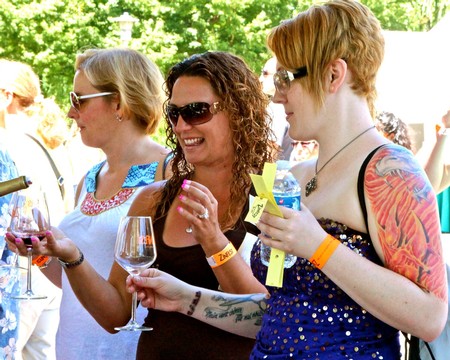
Tickets to ride: Lodi wine lovers.
All the same, today's younger adults have far more choices of alcohol-based beverages than previous generations. Literally, dozens of craft beers, myriad small-production spirits and bottled cocktails, hard seltzers, and even "hard" kombucha and cannabis drinks. When are these spoiled rotten kids going to learn how to appreciate a richly oaked Cabernet Sauvignon or light and minerally Albariño?
For Pete's sake, give them some time, let them have fun. We had ours (speaking as a 60-something). We did not mature, or develop sophisticated tastes, with a snap of the finger or twitch of a nose.
Clearly, of course, messaging is key. The latest generations do not communicate in the same way as the generations who once used rotary dial phones.
I was recently contacted by a marketing company named Broadpath, Inc., which shares a neatly defined diagram on its website that pinpoints a path to engaging younger consumers of adult beverages across the current technology-driven landscape:
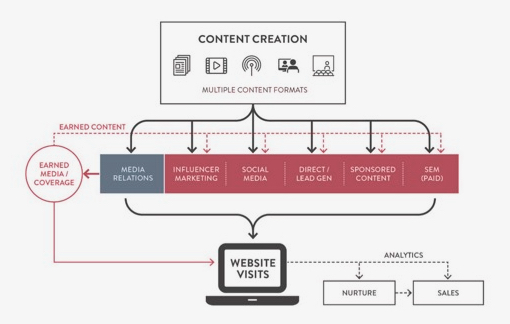
While this strategy demands deft use of SEO (i.e., search engine optimization), social media and influencer marketing, intensive website management and good ol' fashioned public relations, and sales savvy, it still begins and ends with the need for actual content. Content takes on multi-faceted forms but isn't conjured out of thin air. For the wine industry, it begins in the same way as always: a good product with a story to tell. Theoretically, though, if you are growing and producing good wine, you have lots and lots to plug into these pathways.
Easier said than done. The point is, you can produce the best wine in the world. But if you can't figure out how to get that communicated to key demographics, maybe you are sunk after all. Silicon Valley Bank is absolutely correct that the American wine industry has its work cut out for it, which explains its doom-and-gloom prognostications, alarming the media.
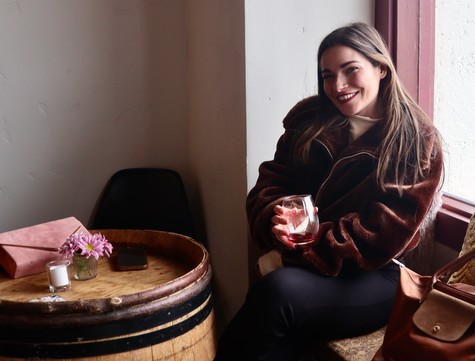
Multi-faceted millennial-age wine educator/merchant/sommelier/influencer Samantha Capaldi (@samanthasommelier) savoring Lodi-grown Nebbiolo at The Lounge at Lodi Crush.
Say that you are able to do what you're supposed to do. But will they—those elusive Gen-Zers and younger Millennials—eventually come to mama? There is no guarantee. But you still have the best possible secret weapon, which is a genuinely good and interesting wine. Granted, the giant-sized wineries work within different parameters, but every premium-level winery will tell you the same thing: the better they make wine, the better the sales.
This is nothing new. For thousands of years, there has been nothing like a well-made wine. It tastes great and stimulates the mind or intellect as much as it titillates the tongue and inebriates the bloodstream. It's been a tried-and-true product for probably longer than the age of the carbon-dated material that the archeologists have managed to dig up (re National Geographic, Oldest Evidence of Winemaking found at 8,000-Year-Old Village).
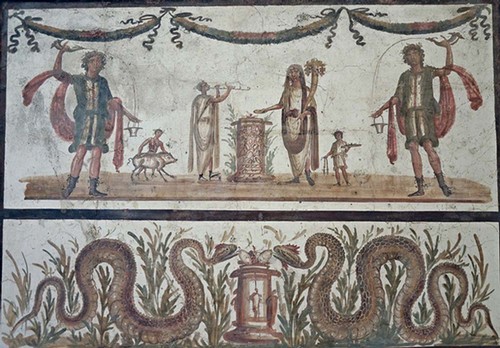
Ancient fresco celebrating the fruit of the vine in Italy, where jars with distinct traces of wine have been dated as far back as the 4th millennium BC (6,000 years ago!).
Wine, more than other alcoholic beverages, can also be a cultural, or civilizing, phenomenon. Everything—including the history of farmers, vintners, vineyards, and entire regions—about a well-made wine is compelling. No matter how “hard” you make a seltzer or kombucha, or how much exotic fruit you stuff into a wine-based beverage, you can’t beat a bottle of truly fine wine, expressive of its grape, region, vineyard, the conscientious labors of a grower or the artistry of a winemaker.
If you're still worried about the American wine industry's survival, think of the current challenges in this way: California is beset by fault lines in the most inconvenient places, and earthquakes that practically throw you out of bed are not exactly uncommon. But does that mean California will sink into the sea within, say, the next 10 years? In all likelihood, the 31st state will still be here, even if worse for wear, many decades and more likely millenniums from now. Sorry, California haters, we are not going anywhere. We'll still have that warm, breezy California weather so hospitable to grapes (re Delineations of Mediterranean climate in Lodi and the rest of the world).
The California wine industry will probably do just fine.

"Let's discuss"—younger wine lovers contemplating the finer points of Lodi Zinfandel.